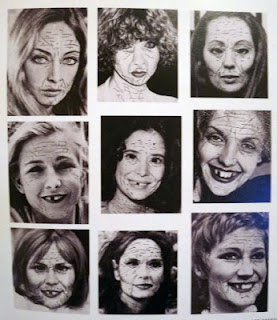I actually had the the opportunity to experience in person
the temporary exhibition The Run-On of
Time of the American photographer Eugene Richards in the Nelson-Atkins Museum
of Art in Kansas City, Missouri. This exhibit covers his career as a photojournalist and documentary photographer
from 1968 to the present, the collection includes 146 photographs, 15
books, and selected videos. After refusing the draft of the Vietnam War,
graduating from Northeastern University, learning large-format photography
alongside Minor White at MIT and later working as a health care advocate in
rural Arkansas, Richards finally returned to Dorchester and began to document
the changing, racially diverse neighborhood where he was born. Over the past fifty
years his oeuvre has consisted of very complicated and controversial topics
such as poverty, emergency medicine, drug addiction, cancer, mental illness,
the impact of war on veterans and their families, caring for the elderly, and
the depopulation of rural America.
In an interview with James
Estrin about this current exhibit, Eugene Richards confessed to the fact the he
never thought of his work as a whole to be as rough as it really is, “I’ve
lived this life, met these people”. He was never trying to just capture the bad
aspects of these neighborhoods, rather he was attempting to reveal something
true about their lives and their humanity. Although at times, one may believe
that we are at lowest lows, but even then, there is still joy and the good
times in which we should not overlook regardless of how simple that one moment
is. In Grandmother, Brooklyn, New York, Richards illustrates to the
audience those wonderful moments of life.
Furthermore, just like Anthony Francis (whom we had at UTSA as a visiting
artist), Richards is very conscious of what it means to go into someone’s
house, into their privacy, and capture those very personal moments in pictures
as we can see in Sgt. Jose Pequeño with his mother, Nelida
Bagley. West Roxbury, Mass and in Crack
Annie, New York City. Ultimately, Richards’s life work illuminate personal
struggles that might otherwise go unnoticed on the day-to-day, with the hope
that his art might spark conversations on how we should care for one another as
human beings.
 |
| Grandmother, Brooklyn, New York, 1993 Gelatin silver print |
 |
| Sgt. Jose Pequeño with his mother, Nelida Bagley. West Roxbury, Mass2008 Gelatin silver print |
 |
| Crack Annie, New York City 1988 Gelatin silver print |





